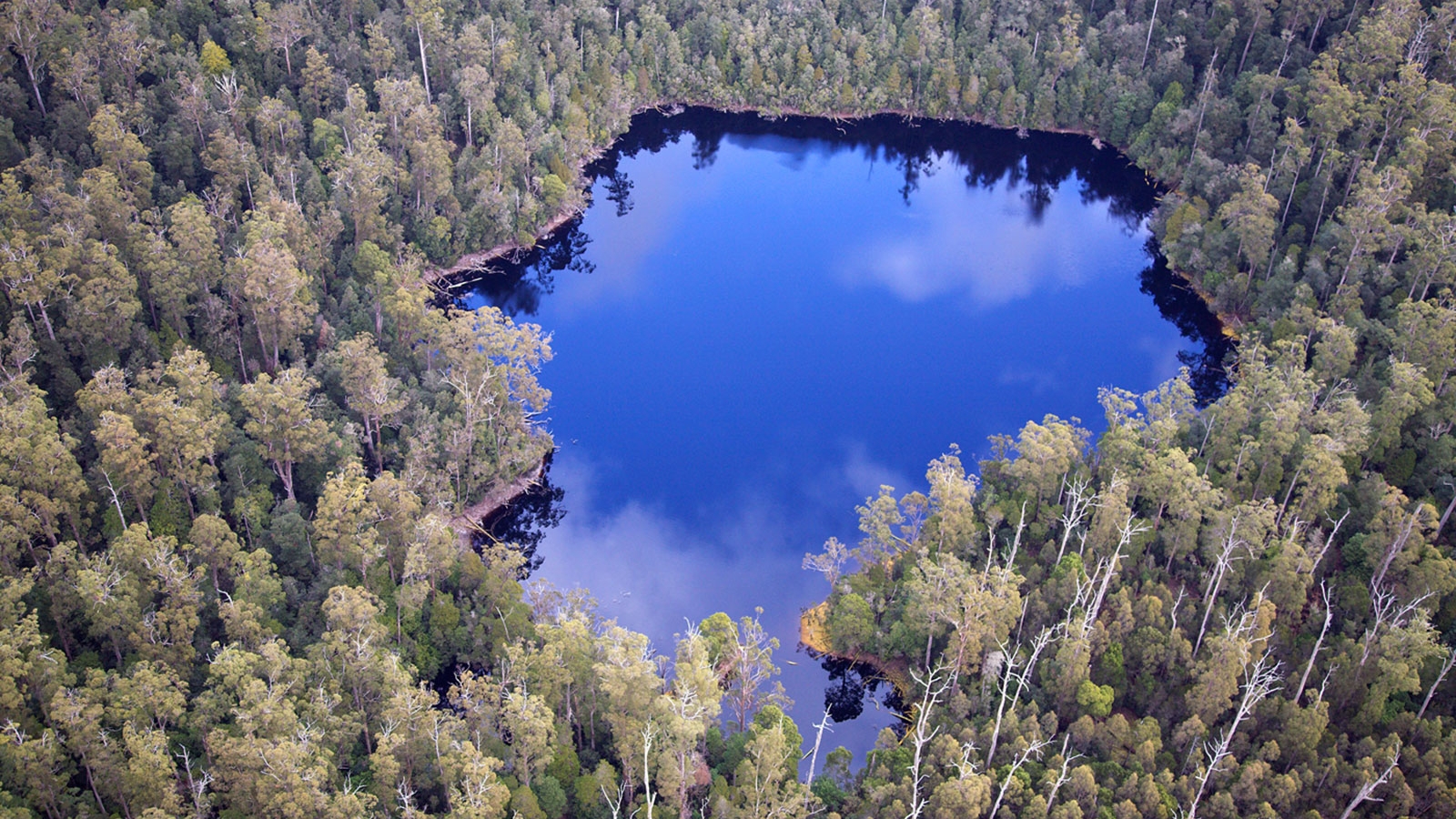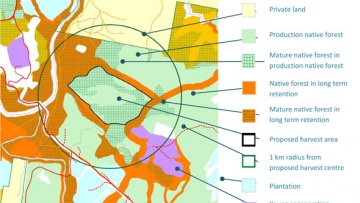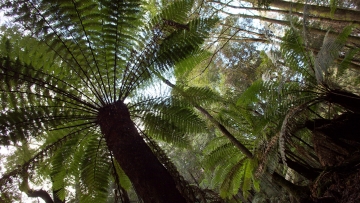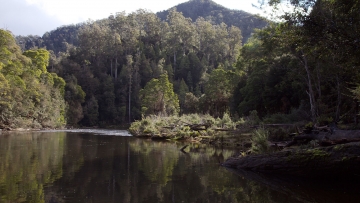
Landscape context planning system
The Landscape Context Planning system provides a practical landscape approach to biodiversity management in Tasmania's public production forests.
The Landscape Context Planning system incorporates landscape ecological principles into forest management planning. The Landscape Context Planning system provides field planners with the ecological rules and tools to take a multi-scaled approach to biodiversity management. This includes applying practical forest retention strategies and guiding long term harvesting plans that considers the context of the landscape in terms of the amount of habitat and cumulative effect of past operations.
While the Landscape Context Planning system can be applied at any scale (e.g., local forest block, or regional), our planners are using the system at a local (~300 ha) and mid-landscape scale (20,000 ha) to maintain and recruit appropriate levels of mature habitat.
At a local scale we plan routinely for biodiversity at a 1km planning unit scale. For clear fell or aggregated retention operations we aim to retain at least 20 percent of native forest on public land as managed in reserves or retained unharvested for at least another 100 years. At a mid-landscape scale, mature habitat is being maintained now and into the future by setting restrictive limits on the existing levels of mature habitat and setting targets for recruiting mature habitat in each forest block. These levels and targets are set by taking a risk-based approach that considers the current availability of mature habitat on public land. This can range from maintaining 90% of extant public mature habitat in degraded landscapes, to maintaining at least 50% of extant public mature habitat where habitat is extensive.
The system accounts for all existing retention in the landscape, including set-asides for wildlife habitat strips, streamside reserves, skyline reserves, reserves or special management zones of threatened species, as well as formal reserves on public land under the Nature Conservation Act.
Sustainable Timber Tasmania reports against these objectives in its Annual Report available from the Publications page.




